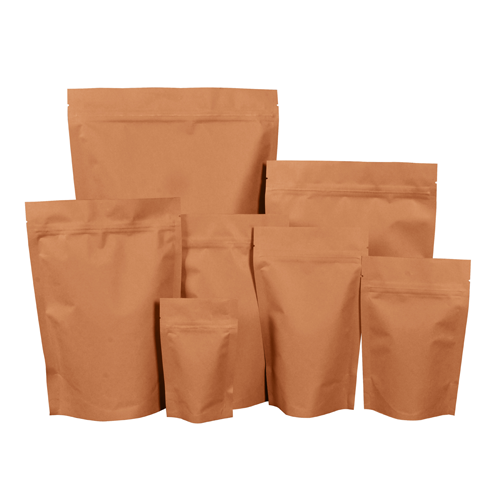Recyclable pouches have gained popularity as an eco-friendly packaging option. They are designed to be easily recyclable, reduce waste, and minimize the environmental impact. Here are some techniques and material options for recyclable pouches.
1. Material Selection:
Monomaterial Pouches: These are made from a single type of material, which makes recycling easier. Common monomaterial options include LDPE (Low-Density Polyethylene) or PET. Monomaterial pouches are favored for their recyclability.
Kraft Paper Pouches: Paper pouches can be a sustainable option, especially when made from recycled or FSC-certified paper. To improve barrier properties and protect contents, these pouches may have a thin plastic or compostable lining.
Biodegradable and Compostable Materials: Some pouches are made from biodegradable or compostable materials like PLA (Polylactic Acid) or PBAT (Polybutylene Adipate Terephthalate). These materials break down more easily in specific environments, reducing their environmental impact.
2. Printing Techniques:
Water-Based Inks: Using water-based inks for printing reduces the environmental impact compared to solvent-based inks.
Digital Printing: Digital printing allows for smaller print runs and less ink waste, making it a more sustainable option.
3. Zipper and Closure Mechanisms:
Choose resealable zippers or closures that are compatible with the recycling process. Ensure they are made from the same material as the pouch to maintain recyclability.
4. Barrier Coatings:
Some materials, like paper, may require barrier coatings to protect the contents. Consider water-based coatings or coatings made from recyclable materials.
5. Recycle-Compatible Adhesives:
Use adhesives that don’t interfere with recycling processes and are compatible with the chosen materials.
6. Collection and Recycling Infrastructure:
Partner with or select pouch suppliers that are part of recycling initiatives and have a clear plan for the end-of-life recycling of their products.
7. Consumer Education:
Include clear recycling instructions on the pouch itself to inform consumers about the proper disposal method.
8. Collaborate with Recycling Facilities:
Work with local recycling facilities to ensure that the recyclable pouches you use are accepted and efficiently processed.
9. Sustainable Packaging Certifications:
Consider obtaining certifications like “How2Recycle” or “ASTM D6400” (for compostability) to indicate the sustainability and recyclability of your pouches.
10. Reusable Pouches:
In some cases, reusable pouches can be a more sustainable option than single-use ones. Encourage consumers to reuse the pouches for various purposes.
11. Circular Economy:
Consider participating in initiatives that promote a circular economy, where materials are continually recycled and reused to reduce waste.
The choice of materials and techniques for recyclable pouches will depend on your specific product, brand values, and the recycling infrastructure in your target markets. It’s important to conduct a life cycle assessment to understand the environmental impact of your packaging choices fully. Additionally, staying up-to-date with advancements in sustainable packaging materials and technologies can help you make more environmentally friendly choices for your pouches.




